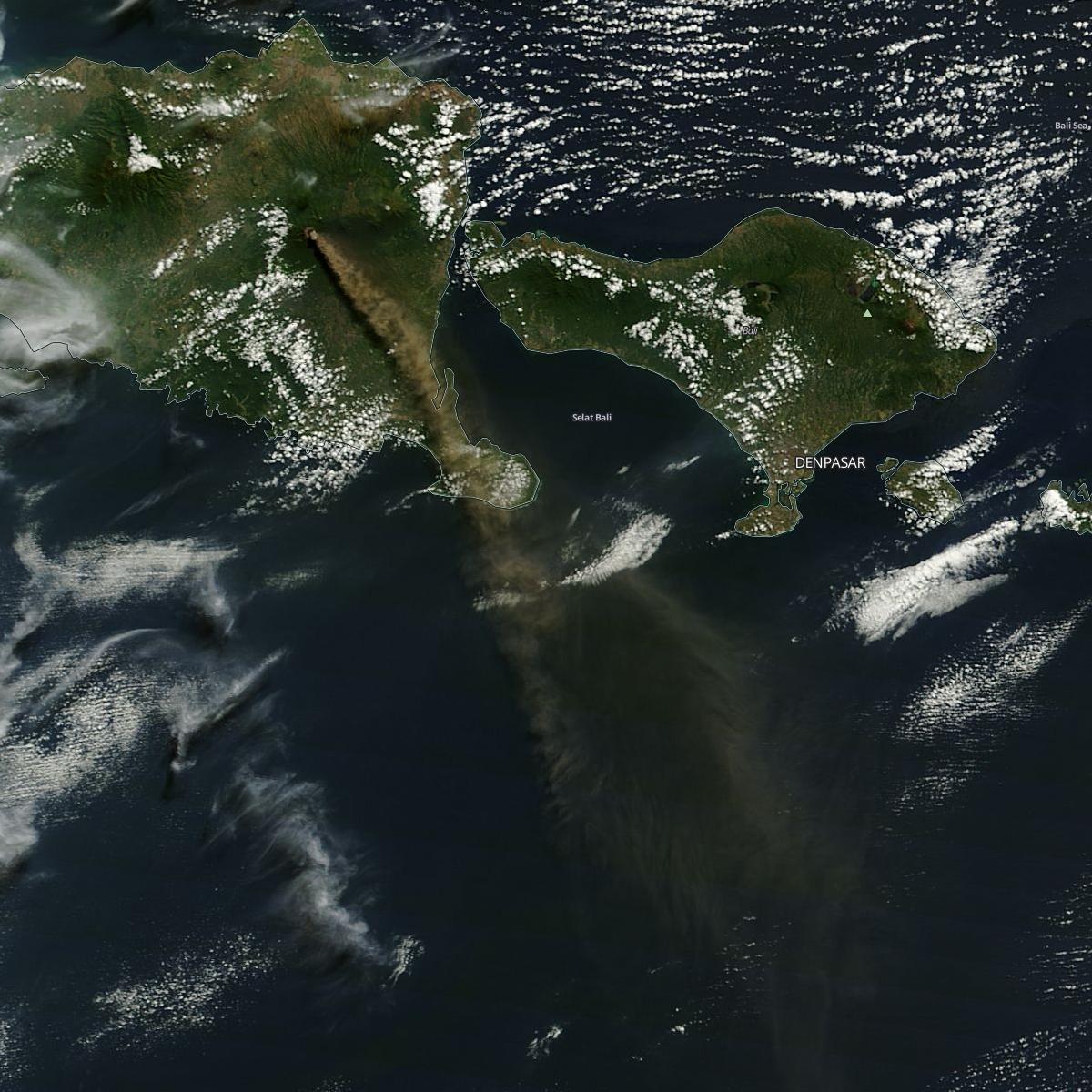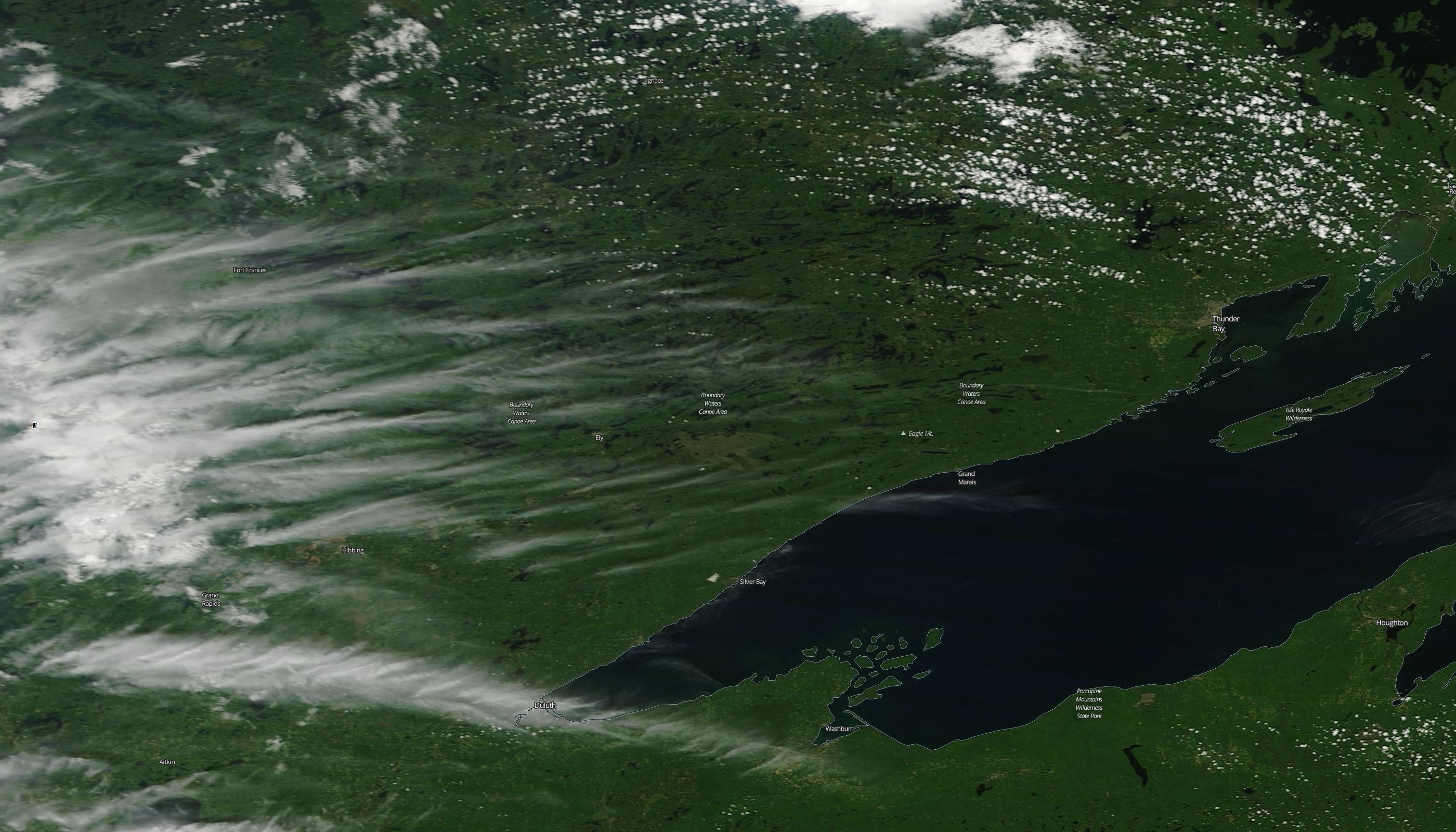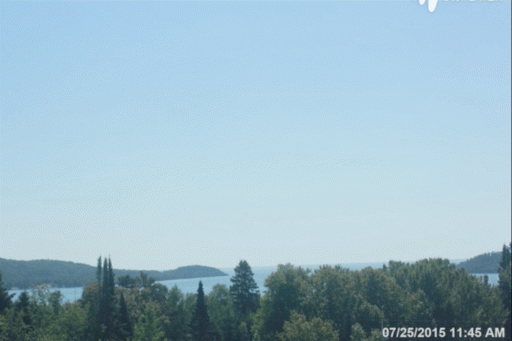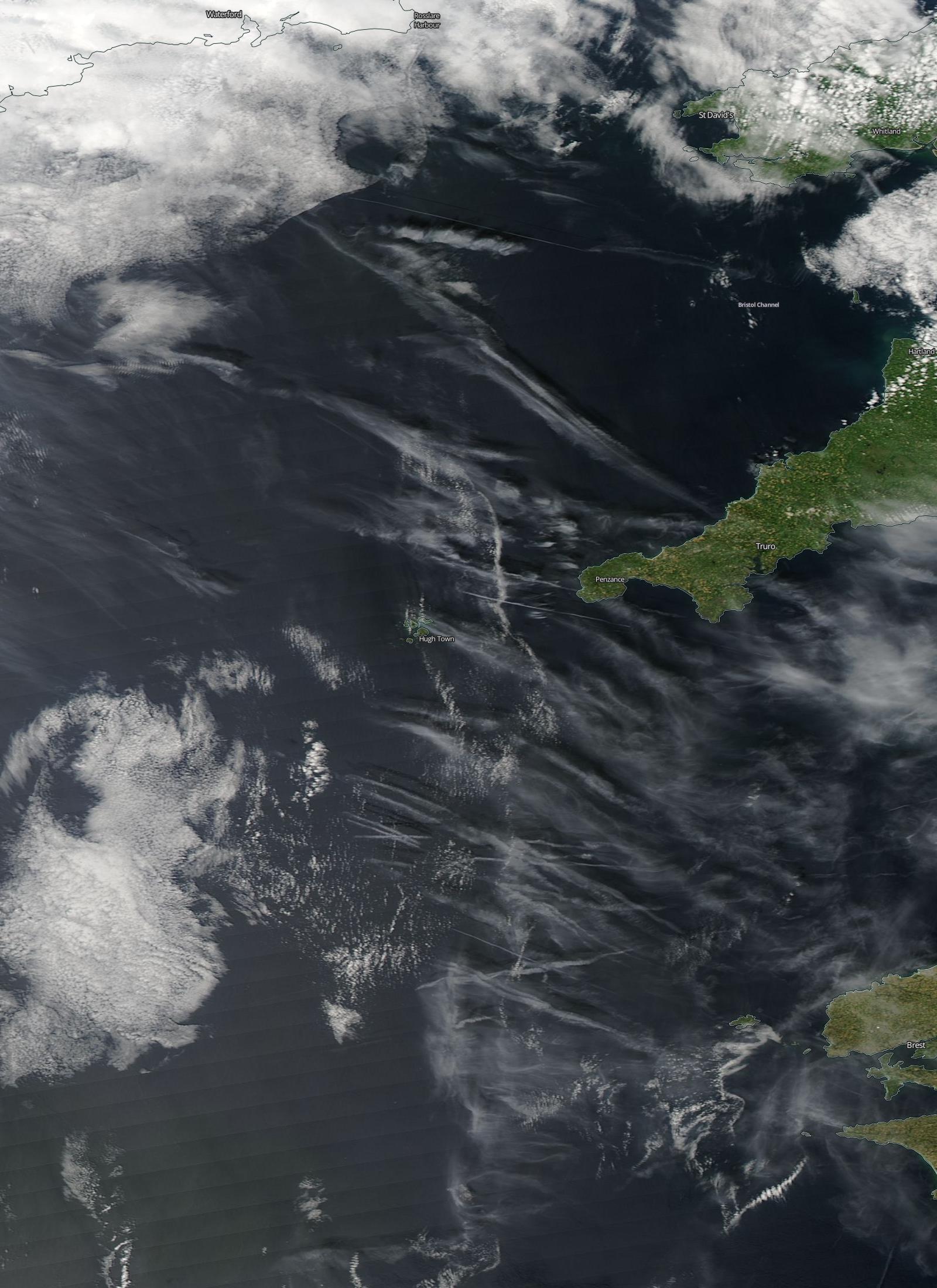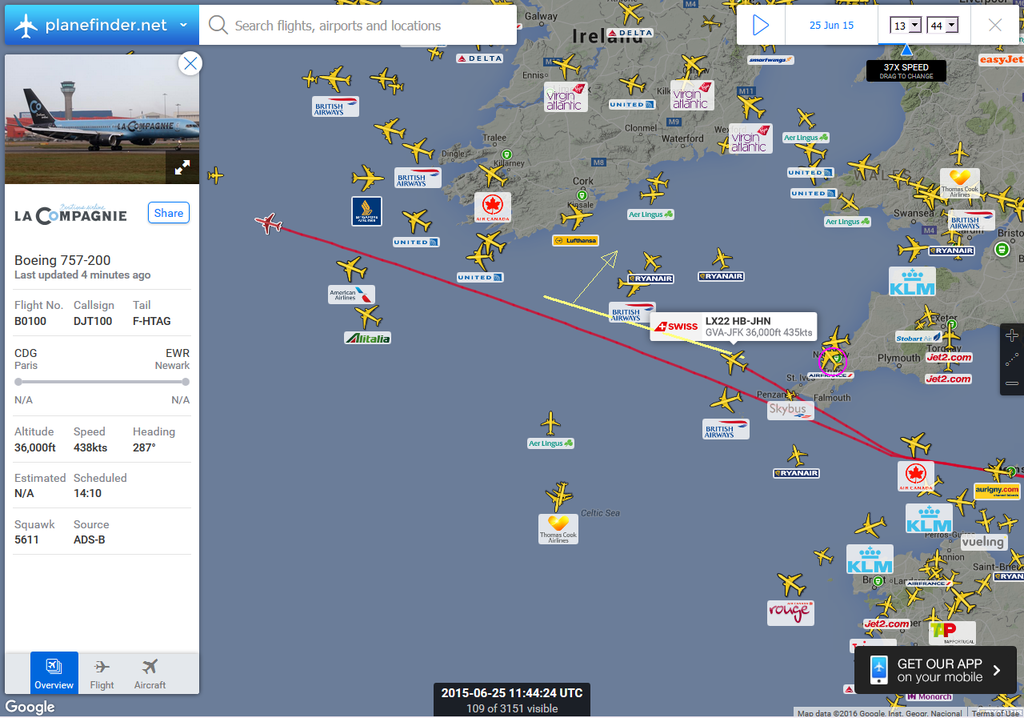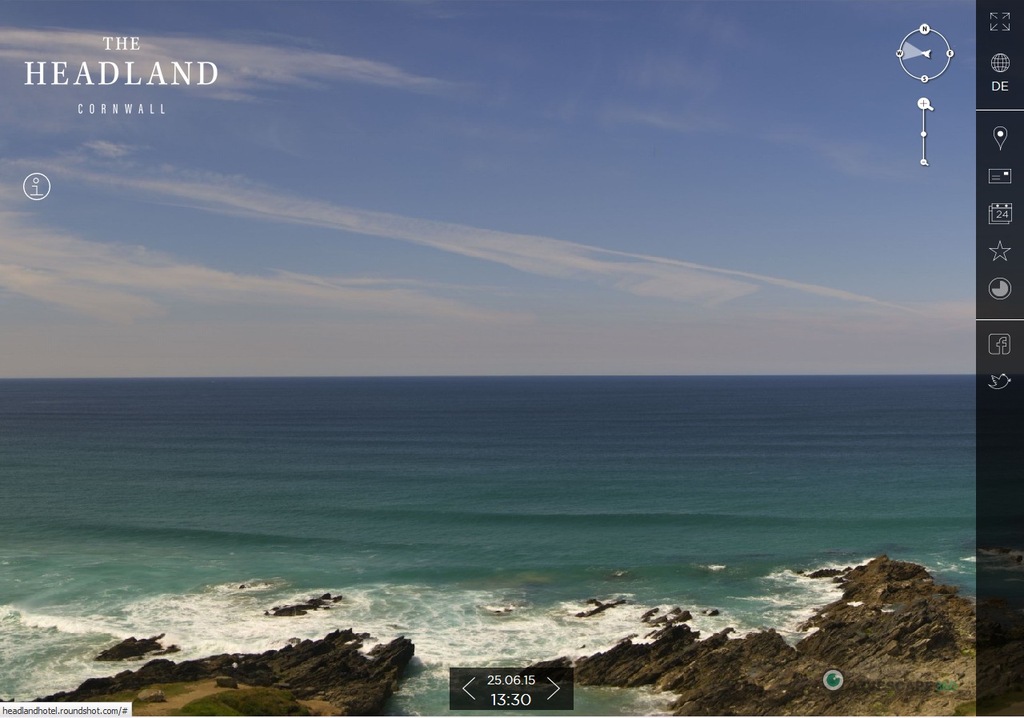Trailspotter
Senior Member.
This thread is for the collections of images of clouds, contrails, etc., which are taken synchronously by both satellite and ground-based cameras. For example, the following images of skies to the East of Cornwall are from June 25, 2015 at 14:20 BST (13:20 UTC):

In the upper left corner is the Aqua satellite image and at the bottom is a cropped image from a high-resolution panoramic photo from the archive of a Roundshot webcam. In the upper right corner is a Google Earth ground-level view from the webcam location (red circle) of the satellite image raised to an altitude of ~33,000 ft (10 km). There is a nearly perfect match between the high-altitude cloud shapes in the satellite and ground-level images.
Probably the best way to browse the MODIS satellite images is via the NASA Worldview interface, that has already been discussed here: https://www.metabunk.org/nasa-worldview-new-interface.t5328/
Unfortunately, this interface does not provide the times of the satellite passes, but these can be found on the SSEC site, where the Terra and Aqua orbit tracks are archived as gifs:

Apart of the Global maps, there are regional maps:

This map of the Aqua orbit tracks over Europe on June 25, 2014 shows that the satellite passed over near Cornwall at about 13:21 UTC.
SSEC also provides the predicted orbit tracks for the next three days. These can be useful for synchronising your own photos and videos of the skies (including time lapses) with the satellite images of the day.
There is even more useful satellite tracking site, http://www.n2yo.com/, that provides 10-day predictions of satellite passes, in particular,
for Terra: http://www.n2yo.com/passes/?s=25994
and Aqua: http://www.n2yo.com/passes/?s=27424
These predictions include the times of satellites' maximal altitudes and their azimuths and elevations. These would give the exact time when the satellite image of the observer's locations is taken. Note that "all passes" option has to be manually selected instead of the default "visible (or night) passes" option.
The predicted passes can also be displayed on the map, showing position of the track relative the observer's location. The registered users (registration is free) can select multiple different locations and toggle between them. This can be useful for taking photos remotely, e.g., by using web cameras in different locations.
Below are the yesterday's (June 29) predictions for my location in the UK (these have already passed and are not available from n2yo.com anymore):


Both Terra and Aqua passed on the day over the same location south of London with the interval of 1h:46m. This is the average value of the time interval between the two satellites' passes for this latitude (~50° N). The average increases to about three hours at the Equator and to more than four hours for the Southern Hemisphere locations, like Australia and New Zealand. However, the time interval varies with the date, depending on the observer's position relative the nearest Terra and Aqua tracks, and can be shorter or longer than the average by up to 80-90 minutes.
I've been taking synchronous pictures of the skies for a few weeks, but am still waiting for an interesting cloud or contrail formation over my location at a right time. Meanwhile, I developed an alternative approach of looking for interesting formations in daily satellite images and checking for the availability of their ground-level images taken at about the same times. I'll present some of my findings in follow-up posts.
In particular, I am looking for suitable web cameras in the areas of interest, which provide image archives and/or time-lapse movies for at least the last 24 hours. The best and most useful webcams I have found so far are from http://www.roundshot.com/. They provide high-resolution panoramic images, which are taken with reasonably short (from 10 minutes) intervals, and their archives in many cases go back for several months and even years.

The full 180° panorama of the skies off the Cornish coast from the above example (note that the image size was greatly reduced upon its downloading to Metabunk ).
).
The most of Roundshot livecam sites also allow to create custom time-lapse movies, which can be used to show how the skies changed during a given day or a longer period. The list of their available cameras has been recently updated to include many new locations around the world:
http://www.roundshot.com/xml_1/internet/en/application/d170/f172.cfm
There are many other webcams all around the world, which can be used to watch the skies remotely in different locations. Creating and expanding a list of such "skycams" could be one of the objectives of this thread.
In the upper left corner is the Aqua satellite image and at the bottom is a cropped image from a high-resolution panoramic photo from the archive of a Roundshot webcam. In the upper right corner is a Google Earth ground-level view from the webcam location (red circle) of the satellite image raised to an altitude of ~33,000 ft (10 km). There is a nearly perfect match between the high-altitude cloud shapes in the satellite and ground-level images.
Probably the best way to browse the MODIS satellite images is via the NASA Worldview interface, that has already been discussed here: https://www.metabunk.org/nasa-worldview-new-interface.t5328/
Unfortunately, this interface does not provide the times of the satellite passes, but these can be found on the SSEC site, where the Terra and Aqua orbit tracks are archived as gifs:

Apart of the Global maps, there are regional maps:

This map of the Aqua orbit tracks over Europe on June 25, 2014 shows that the satellite passed over near Cornwall at about 13:21 UTC.
SSEC also provides the predicted orbit tracks for the next three days. These can be useful for synchronising your own photos and videos of the skies (including time lapses) with the satellite images of the day.
There is even more useful satellite tracking site, http://www.n2yo.com/, that provides 10-day predictions of satellite passes, in particular,
for Terra: http://www.n2yo.com/passes/?s=25994
and Aqua: http://www.n2yo.com/passes/?s=27424
These predictions include the times of satellites' maximal altitudes and their azimuths and elevations. These would give the exact time when the satellite image of the observer's locations is taken. Note that "all passes" option has to be manually selected instead of the default "visible (or night) passes" option.
The predicted passes can also be displayed on the map, showing position of the track relative the observer's location. The registered users (registration is free) can select multiple different locations and toggle between them. This can be useful for taking photos remotely, e.g., by using web cameras in different locations.
Below are the yesterday's (June 29) predictions for my location in the UK (these have already passed and are not available from n2yo.com anymore):


Both Terra and Aqua passed on the day over the same location south of London with the interval of 1h:46m. This is the average value of the time interval between the two satellites' passes for this latitude (~50° N). The average increases to about three hours at the Equator and to more than four hours for the Southern Hemisphere locations, like Australia and New Zealand. However, the time interval varies with the date, depending on the observer's position relative the nearest Terra and Aqua tracks, and can be shorter or longer than the average by up to 80-90 minutes.
I've been taking synchronous pictures of the skies for a few weeks, but am still waiting for an interesting cloud or contrail formation over my location at a right time. Meanwhile, I developed an alternative approach of looking for interesting formations in daily satellite images and checking for the availability of their ground-level images taken at about the same times. I'll present some of my findings in follow-up posts.
In particular, I am looking for suitable web cameras in the areas of interest, which provide image archives and/or time-lapse movies for at least the last 24 hours. The best and most useful webcams I have found so far are from http://www.roundshot.com/. They provide high-resolution panoramic images, which are taken with reasonably short (from 10 minutes) intervals, and their archives in many cases go back for several months and even years.
The full 180° panorama of the skies off the Cornish coast from the above example (note that the image size was greatly reduced upon its downloading to Metabunk
The most of Roundshot livecam sites also allow to create custom time-lapse movies, which can be used to show how the skies changed during a given day or a longer period. The list of their available cameras has been recently updated to include many new locations around the world:
http://www.roundshot.com/xml_1/internet/en/application/d170/f172.cfm
There are many other webcams all around the world, which can be used to watch the skies remotely in different locations. Creating and expanding a list of such "skycams" could be one of the objectives of this thread.
Last edited:







